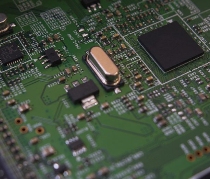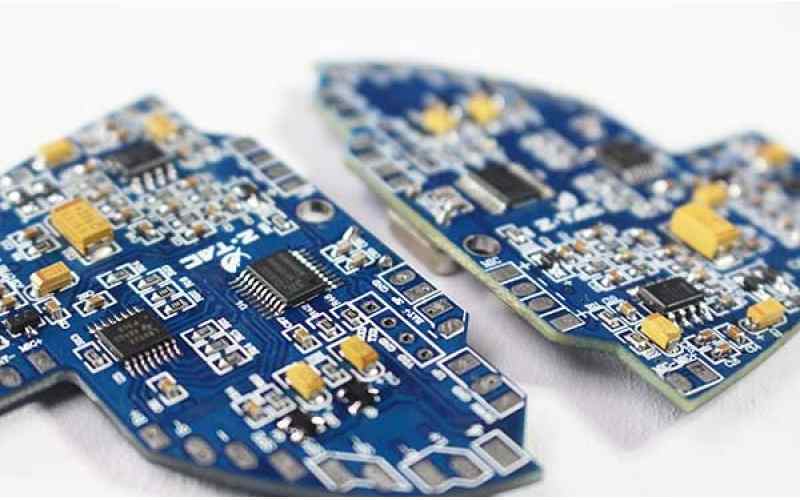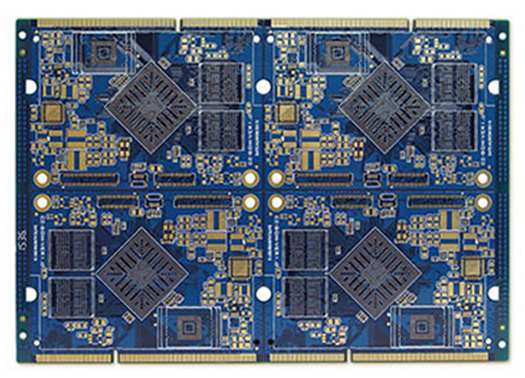
I. What is halogen-free substrate
In the periodic table of chemical elements, the periodic series Ⅶ element refers to the halogen element, including fluorine (F), chlorine (Cl), bromine (Br), iodine (I), astatine (At). According to the JCA-ES-01-2003 standard: the copper clad plate with chlorine (C1) and bromine (Br) content less than 0.09% Wt(weight ratio), respectively, is defined as halogen-free copper clad plate. (Meanwhile, CI+Br total amount ≤ 0.15% [1500PPM])
Two, why ban halogen
Halogen:
Halogen elements in the periodic table, including fluorine (F), chlorine (CL), bromine (Br), and iodine (1). At present, the flame retardant substrate, FR4, CEM-3 and so on, flame retardants are mostly brominated epoxy resin.
Related institutions have done research on epoxy resin substrates: flame retardant substrates containing halogen (polybromobiphenyl PBB: Polybrominated diphenyl ether PBDE (PBDE) will release harmful substances such as dioxin Dioxin TCDD and Benzfuran when it is discarded and burned. These substances are smelly and highly toxic, and can cause cancer. Once inhaled, they cannot be discharged, causing great harm to the human body. Therefore, the EU law prohibits the use of six substances such as PBB and PBDE. China's Ministry of Information Industry also required that electronic information products put on the market should not contain lead, mercury, hexvalent chromium, polybrominated biphenyls or polybrominated diphenyls.
It is understood that PBB and PBDE are basically no longer used in the copper clad industry, and bromo-flame retardant materials other than PBB and PBDE are mostly used, such as tetrabromo-dicophenol A and dibromo-dicophenol, whose chemical formula is CISHIZOBr4. Although there are no laws and regulations on this kind of copper clad plate containing bromine as flame retardant, this kind of copper clad plate containing bromine will release a large amount of toxic gas (bromine type) when burning or electrical fire, and emit a large amount of smoke; When printed circuit board is used for hot air leveling and component welding, the board is subjected to high temperature (> 200), will also release trace amounts of hydrogen bromide; Whether it will also produce toxic gases is still being evaluated.
Three, the principle of halogen-free substrate
Halogen-free board is to replace or replace these harmful elements to achieve environmental protection and non-toxic PCB. At present, most halogen-free materials are mainly phosphorus series and phosphorus nitrogen series. Interestingly, when the polymer resin containing phosphorus nitrogen compounds is burned, it is decomposed by heat to generate metaphosphate, which has strong dewater-ability, forming carbonized film on the surface of the polymer resin, insulating the resin burning surface from contact with the air, so that the fire is extinguished and the flame retardant effect is achieved. Polymer resin containing phosphorus and nitrogen compounds, combustion produces non-combustible gas, to assist the resin system flame retardant.

Four, the characteristics of halogen free plate
1. Insulation of materials
Halogen-free PCB in addition to environmental protection, but also has good heat dissipation reliability, more suitable for lead-free circuit required high temperature process; The use of P or N to replace the halogen atom reduces the polarity of the molecular bond segment of epoxy resin to a certain extent, thus improving the insulation resistance and penetration resistance.
2. Water absorption of materials
As the N and P foxes in the nitrogen and phosphorus REDOX resins have fewer electrons than those in halogens, the probability of forming hydrogen bonds with hydrogen atoms in water is lower than that of halogens, so the water absorption of the materials is lower than that of conventional halogens flame retardant materials. For the plate, low water absorption to improve the reliability and stability of the material has a certain impact.
3. Thermal stability of materials
The content of nitrogen and phosphorus in halogen-free plate is higher than that of halogen in common halogen materials, so the molecular weight and Tg value of the monomer are increased. Under the condition of heat, its molecular mobility will be lower than conventional epoxy resin, so the halogen-free material has a relatively small coefficient of thermal expansion.
Compared with halogen-free plate, halogen-free plate has more advantages, and halogen-free plate replaces halogen-free plate is also the general trend. But every coin has two sides, and the advantages of halogen-free plates come at the cost of complexity not only in the manufacturing process but also in the design. Halogen-free PCB board and conventional PCB have differences, such as drilling.
5. Experience of producing halogen-free PCB
1. Drilling machinability
Drilling condition is an important parameter, which directly affects the quality of PCB hole wall during machining. The P and N series functional groups used in halogen-free plates increase the molecular weight and enhance the rigidity of molecular bonds, resulting in increased rigidity of materials. At the same time, the TG points of halogen-free materials are generally high, so the drilling effect of ordinary FR-4 drilling parameters is not ideal. When drilling a halogen free plate, make some adjustments under normal drilling conditions.
2. Laminate
Laminating parameters may vary from company to company. Take the above mentioned profit substrate and PP multilayer board, in order to ensure the full flow of resin, so that the binding force is good, the requirements of low plate heating rate (1.0-1.5℃ / min) and multi-section pressure, and in the high temperature stage is required to maintain a longer time, 180℃ for more than 50 minutes. The following is a group of recommended platen program Settings and the actual plate temperature rise. The bonding force between the copper foil and the substrate is 1.ON/mm. After six thermal shocks, there is no stratification or bubble phenomenon in the plate.
3. Alkali resistance
Generally, the alkaline resistance of halogen-free plates is worse than that of ordinary FR-4. Therefore, special attention should be paid to the etching process and the rework process after welding resistance. The soaking time in the alkaline film removal liquid can not be too long to prevent the appearance of white spots on the substrate.
4. No halogen welding production
At present, there are many kinds of halogen-free solder ink introduced in the world. Its performance is not much different from that of ordinary liquid sensitive ink, and the specific operation is basically similar to ordinary ink.
Halogen-free PCB board has a low water absorption rate, ADAPTS to the requirements of environmental protection, and can meet the quality requirements in other performance. Therefore, the demand for halogen-free PCB board has been increasing.









